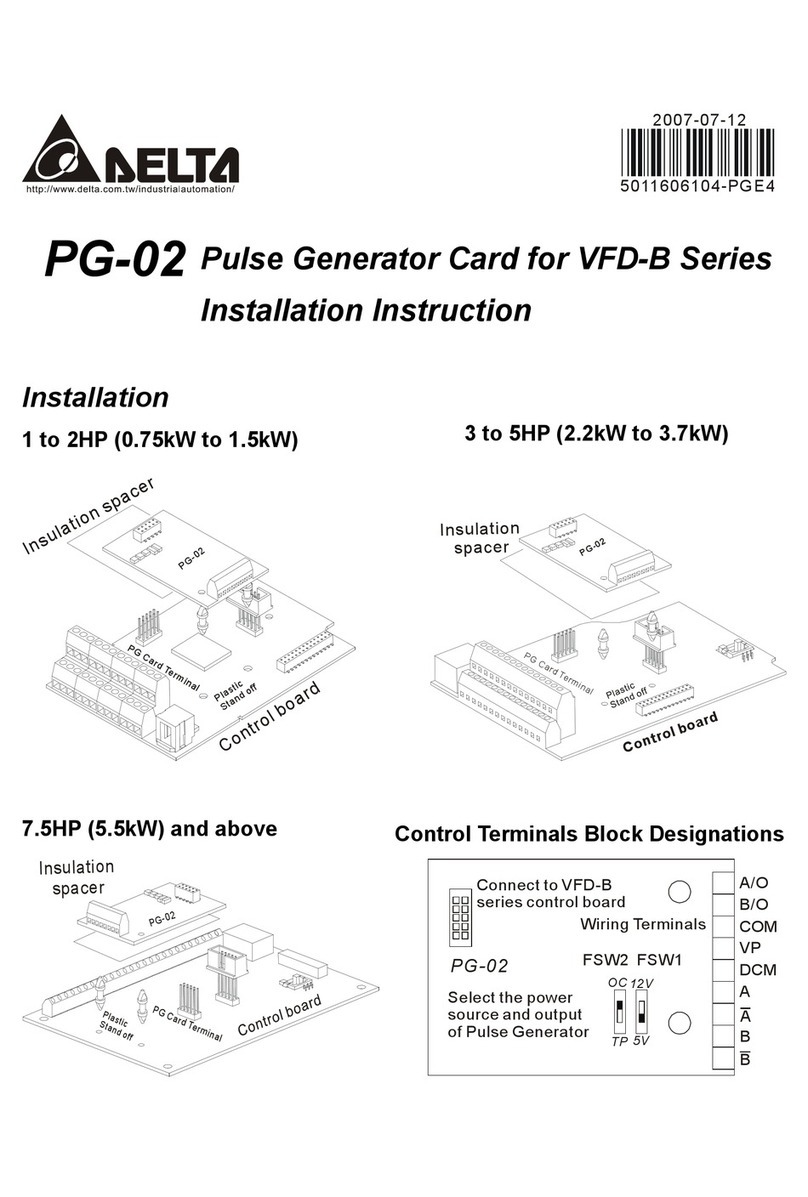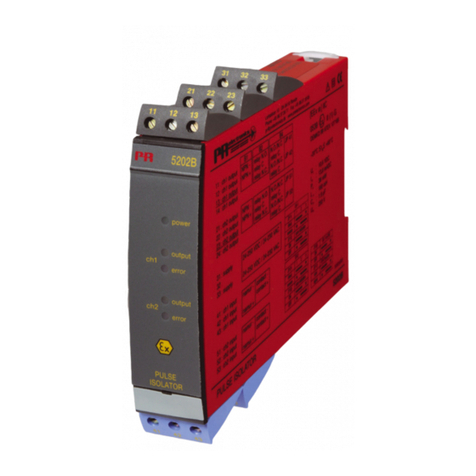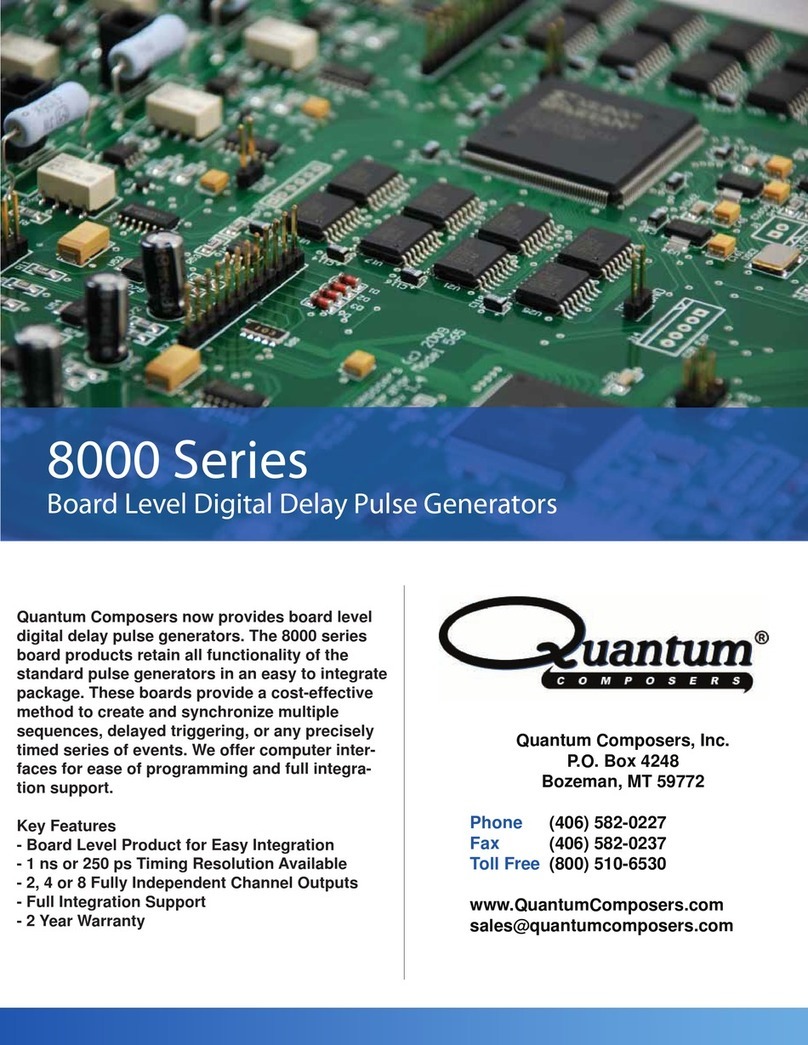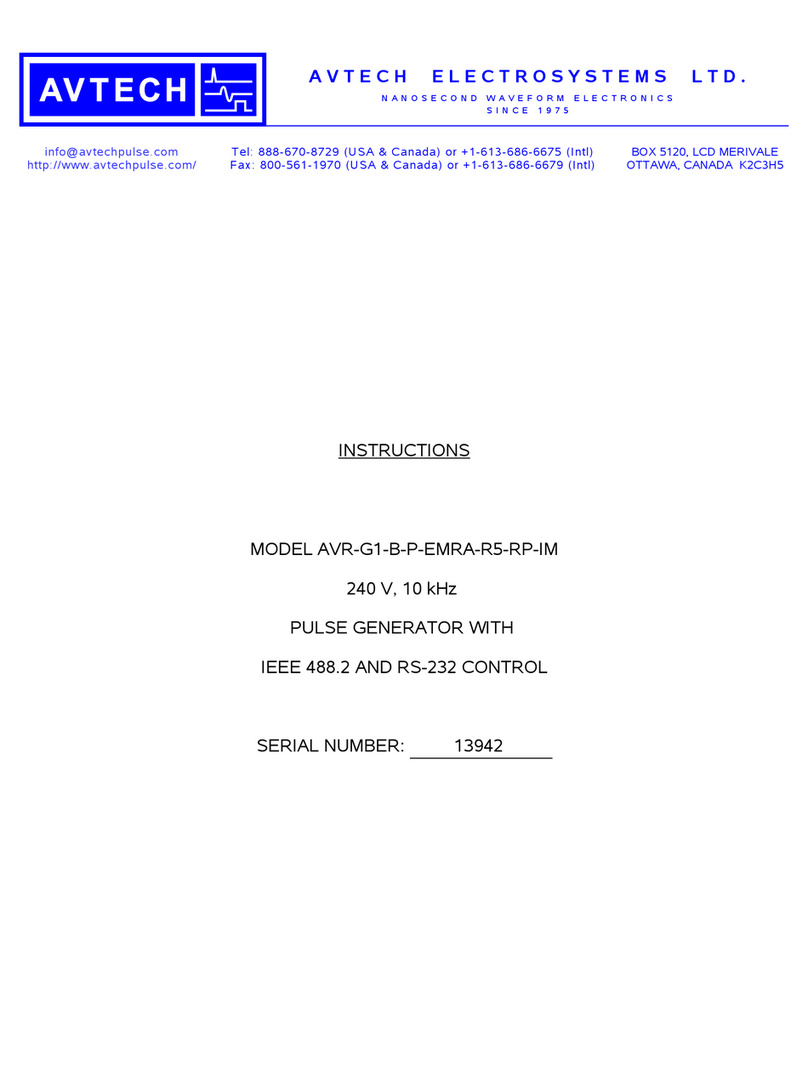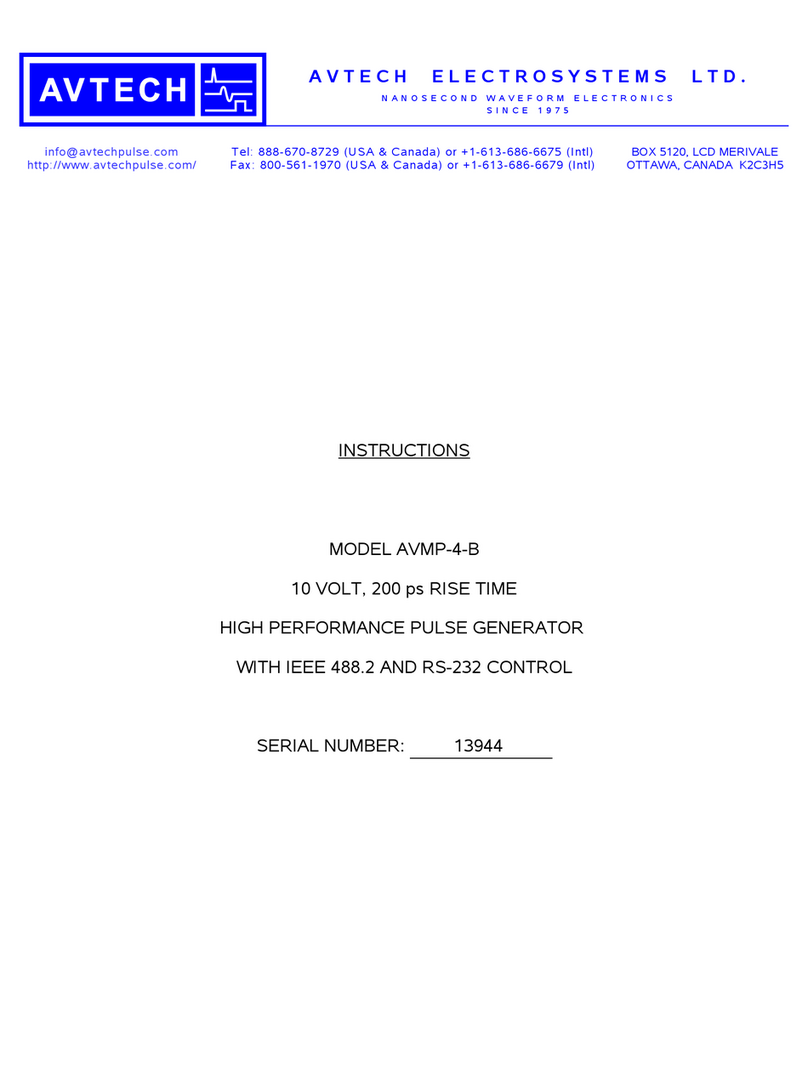Digitimer NeuroLog NL405 Width/Delay User manual

NL405 - Width/Delay
Introduction
The NL405 WIDTH/DELAY is a digitally controlled pulse duration generator and is used
to produce precise pulses of adjustable duration with high accuracy and repeatability.
The NL405 produces TTL logic output pulses (of both polarities) that have a duration set
using three decades of thumbwheels and a seven (7) position range switch. It also
features a press to start button, LED indication of an output and a separate logic output
signal at the end of the defined WIDTH time. It was designed as a replacement for the
NL401 and in most places where the NL403 would have been used.
The NL405 can be triggered off either positive or negative-going edges of the input pulses
and the NL405 is capable of 100% duty cycles. An external push to make switch can be
used when -ve edge triggering is selected.
In the “FIXED WIDTH” mode, the NL405 produces an Output pulse as specified by the
front panel controls; In the “RE-TRIGGER” mode, any valid Input trigger arriving whilst the
Output is active will restart the timing and therefore extending the Output pulse duration.
As long time periods can be generated (999 seconds is over 16 minutes) any change in
position of the rotary range switch will stop the current Output and inhibit further input
triggers for 450 ms.
The “DELAYED” Output socket provides a short duration pulse (set internally) that is
produced at the end of the timed WIDTH pulse. This provides a trigger-out after the set
Delay time.
The NL405 can be used for digital control of pulse duration or for introduction of a delay to
a trigger pulse. The logarithmic or exponential nature of the many biological responses
make the very wide continuous adjustment (from µs to minutes) particularly beneficial.
Specification Summary
Input: : TTL pulse. Input is 1 TTL load.
Trigger edge : Positive or Negative, selected from front panel
Manual : Push-button, operation on push.
Output (Width) : TTL. Output will drive 10 loads.
Polarity : Both active-high and active-low sockets
Range : 1 µs to 999 s
Control : 001 to 999
Multiplier : 1 µs, 10 µs, 100 µs, 1 ms, 10 ms, 100 ms, 1 s.
Accuracy : ±0.5%
Delay from Trigger In : <200 ns
Indicator : Amber LED on for approximately 100 ms for each pulse
Output (Delay) : TTL. Output will drive 10 loads.
Polarity : Active-high
Duration : 0.5 µs, 1.5 µs, 5 µs ±20%
50 µs, 150 µs, 500 µs ±10%, by on-board jumpers.
Output
Mode : Fixed Width or Re-Triggered, selected from front panel
Reset/Inhibit : 450 ms ±20%, after change of rotary range control.
Rear connections to the motherboard allow Input and Output interconnections between this and other logic
modules without the need of front panel cables.
Users Manual NeuroLog™ System NL405
Digitimer Ltd Page 1 of 5 Copyright © 2003

Mode selection
TRIGGER in
OUTPUT
OUTPUT
"Fixed Width"
"Re-Trigger"
Fig. NL405-1 : Modes - Fixed Width / Re-Trigger
Output is re-triggered hereTrigger is ignored
In FIXED WIDTH mode, the NL405 will produce an Output pulse of the duration as specified on the Front Panel
regardless of further Trigger applied to the input (IN). Trigger pulses received during the time the Output (OUT)
is active are ignored.
In RE-TRIGGER mode, the Output pulse duration of NL405 is extended when a further trigger pulse is received
at the input (IN). The number of times an output can be extended by re-triggering, is unlimited.
Output “reset” and Inhibit
TRIGGER in
OUTPUT
Fig. NL405-2 : Output "reset" and Inhibit
Output is "reset" here
WIDTH <WIDTH
RANGE SWITCH Switch rotated here
Trigger ignored as within 450ms of "reset"
Output "Delayed"
No Delayed Output
Pulse, as "reset"
450ms
WIDTH "reset"/shortened
The Output pulse duration can be terminated early, in either mode, by rotating the Range control. It would be
normal, in this instance, to rotate it to the next ‘click’ position and then back to where it was set. The Outputs
are inhibited for 450 ms after the switch becomes still. Note that a Delayed Output pulse is NOT generated at
the end of a WIDTH that is terminated early.
Users Manual NeuroLog™ System NL405
Digitimer Ltd Page 2 of 5 Copyright © 2003

Trigger selection and relationship to Outputs
TRIGGER in
Output "OUT"
Output "OUT"
Output "Delayed"
WIDTH WIDTH
Width as set on-board
0V
Fig. NL405-3 : Outputs relationship to Input (+ve edge trigger)
TRIGGER in
Output "OUT"
Output "OUT"
Output "Delayed"
WIDTH WIDTH
Width as set on-board
0V
Fig. NL405-4 : Outputs relationship to Input (-ve edge trigger)
The above two figures show the effect of selecting “+ve edge” or “-ve edge” triggering.
POSITIVE EDGE (+ve edge) triggering means that the unit will be internally triggered when a rising edge is
seen on the input (IN) socket.
NEGATIVE EDGE (-ve edge) triggering means that the unit will be internally triggered when a falling edge is
seen on the input (IN) socket.
This can often be used with an external switch closure, such as a foot switch, as long as the DELAYED OUT is
used, the unit is set to RE-TRIGGER and the WIDTH is set longer than the contact bounce time (which will
normally be under 10 ms). The unit may also be triggered when the switch is released (because of poor
contacts) and in this instance an external capacitor across the contacts is called for. This may need to be
found from trial and error but a value of 1µF would be a good starting point.
Users Manual NeuroLog™ System NL405
Digitimer Ltd Page 3 of 5 Copyright © 2003

Rear Connection IN/OUT jumpers (on-board)
JMP2
NL405 COMPONENT VIEW
JMP1
Parked
Parked
IN
OUT OUT DELAYED
Fig. NL405-3 : On-board IN/OUT jumpers
The rear edge connector in the NL900 rack allows adjacent modules to connected together without the need of
external front panel leads.
This module has a choice of three output signals that can be connected to the rear connector for automatic
routing to the module on the immediate right. The Input signal can be disconnected from the output of the
module on the immediate left if it is inappropriate.
The position of these jumpers are changed by gently pulling them away from the PCB, then rotating them 90°,
180° or 270° before replacing them in two of the small gold board sockets. In the “Parked” or “N/C” position the
jumper is placed in only one gold socket and a parking hole.
INPUT - the upper jumper allows the Output signal from the module to the immediate left to be connected to the
input socket (IN), or it may be "parked" for "no-connection (N/C)".
OUTPUT - the lower jumper selects which of the three Output signals is passed to the Input of the module to
the immediate right, or it may be "parked" for "no-connection (N/C)".
Users Manual NeuroLog™ System NL405
Digitimer Ltd Page 4 of 5 Copyright © 2003

Delayed Output Pulse Duration Jumpers (on-board)
NL405
Component View of PCB
"Delayed Output" Pulse Duration
Delayed Output Pulse Duration Selection
500 µs5 µs
150 µs1.5 µs
50 µs0.5 µs
SettingJumpersSettingJumpers
The Duration of the pulse at “DELAYED OUT” can be set to one of six (6) pulse durations and is set by two
jumpers on the PCB.
These are altered by pulling them off their pins, moving them to where is required and pushing them back on.
Both jumpers MUST be fitted in one of the six configurations shown below.
We reserve the right to alter specifications and price without prior notification.
First Issued: December 19, 2002 Last Revision: March 26, 2003 Printed: March 26, 2003
File Reference: N:\Docs\Company\Manuals\NeuroLog \ NL405-02.lwp
Users Manual NeuroLog™ System NL405
Digitimer Ltd Page 5 of 5 Copyright © 2003
Table of contents
